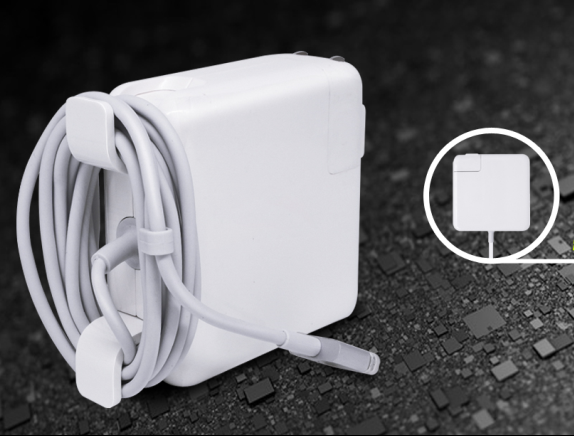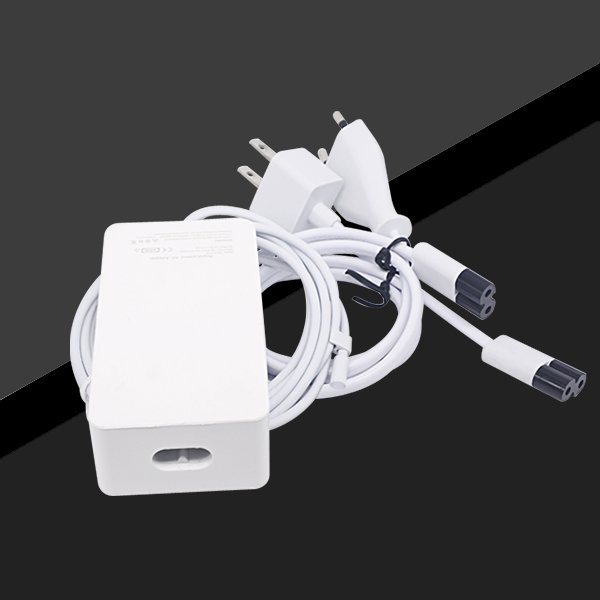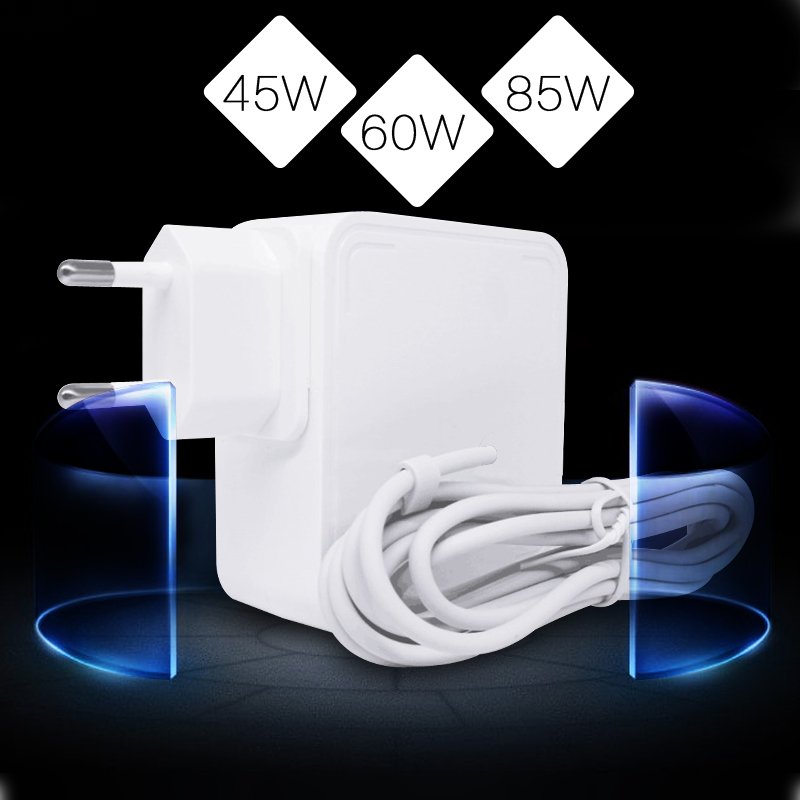When it comes to power adapters, many people may not know what it is. If you say that the rectangular accessories on the laptop charging cable or mobile phone chargers are common, yes, that is the power adapter. The power adapter is also called an external power supply. It is the power supply voltage conversion device for small portable electronic equipment and electronic appliances, commonly found in small electronic products such as mobile phones, liquid crystal displays and notebook computers.

How does the power adapter work?
Its function is to convert the high voltage of 220 volts at home into a stable low voltage of about 5 volts to 20 volts that these electronic products can work, so that they can work normally, generally by the shell, transformer, inductor, capacitor, control IC, PCB It consists of boards and other components, and its working principle is converted from AC input to DC output; according to the connection mode, it can be divided into wall adapter and desktop adapter.
Without it, it will bring a lot of inconvenience to our daily use.
The power converter (that is, AC to DC) converts AC power to DC power, and then passes through the computer. It cannot protect the computer, but there is a storage device (also called a charger) for storing power in the computer, so it can be protected in the event of a power failure computer. Switching power supplies and adapters are both switching power supplies, which are composed of high-frequency switching tubes and their control circuits. The adapter power supply is a regulated switching power supply. The switching power supply charger has a floating charge function. The voltage becomes larger as the current decreases, and in the end there is only voltage but no current.

The composition and application of the power adapter
Power adapters are commonly found in small electronic products such as mobile phones, LCD monitors, and notebook computers. It is generally composed of a shell, a power transformer and a rectifier circuit. According to its output type, it can be divided into AC output type and DC output type; according to the connection method, it can be divided into wall type and desktop type.
It is widely used in equipment such as mobile phone handsets, game consoles, language repeaters, walkmans, notebook computers, and cellular phones.

Tips to note when using the power adapter
There are generally several items on the label of the power adapter (hereinafter referred to as adapter) that need to be paid attention to.
- It is the model of the adapter. For example, the model of this adapter is ABC-120100. It tells us a few pieces of information, namely its manufacturer, wattage, etc. The beginning of ABC is generally ##Company code, 120100 means this adapter It is 12W, 050200 is 10W;
- It is the INPUT of the adapter. The universal one in China is generally 100-240V~50-60Hz, which means that this adapter can work normally under the voltage of 100V-240V;
- It is the OUTPUT of the adapter. Two numbers can quickly calculate the wattage of the adapter. For example, for this adapter, voltage 12V*current 1A=12W (power), indicating that the power supply is a 12W adapter.
The power adapter of most notebook computers can be suitable for 100~240V alternating current (50/60Hz). Basically, most notebook computers have an external power supply and use a power cord to connect to the mainframe, which can reduce the size and weight of the mainframe. Only a few models have the power supply built in the mainframe. - There are printed product parameters on the power adapter, which display indicators such as power, input and output voltage, and current. Pay special attention to the range of input voltage. This is the so-called "travel power adapter".

Common faults and troubleshooting methods of adapters
- Power cord failure
Circuit failure, including the power cord is damaged and not energized, the contact port is oxidized and the contact is poor. Focus on checking whether the input line and output line are energized.
If the power cord is faulty, it can be solved by replacing the power cord. - The output voltage is too low
The following are the main causes of low output voltage:
1) Switching power supply load short circuit failure (especially DC/DC converter short circuit or poor performance, etc.). At this time, first disconnect all loads of the switching power supply circuit and check whether the switching power supply circuit is faulty or the load circuit is faulty. If the load circuit is disconnected and the voltage output is normal, it means that the load is too heavy; or it is still abnormal, it means that the switching power supply circuit is faulty.
2) The failure of the filter capacitor or rectifier diode at the output voltage end can be judged by the replacement method.
3) The performance of the switching tube is degraded, causing the switching tube to fail to conduct normally, which increases the internal resistance of the power supply and reduces the load capacity.
4) Poor switching transformer not only causes the output voltage to drop, but also causes insufficient excitation of the switching tube and damages the switching tube
5) The 300V filter capacitor is poor, resulting in poor load carrying capacity of the power supply, and the output voltage will drop as soon as the load is connected. - The output voltage is too high
Excessive output voltage generally comes from voltage stabilization sampling and voltage stabilization control circuits. In the closed control loop composed of DC output, sampling resistor, error sampling amplifier such as TL431, optocoupler, power control chip and other circuits, any one of the components will cause the output voltage to rise. - The fuse is normal and there is no output voltage
The fuse is normal and no output voltage indicates that the switching power supply is not working or has entered a protection state. The first step is to check the value of the startup voltage of the startup pin of the power control chip. If there is no startup voltage or the startup voltage is too low, check whether the external components of the startup pin and the startup resistor are leaking.
If the power control chip is normal, the fault can be quickly found through the above monitoring. If there is a startup voltage, measure whether there are high and low level jumps at the output of the control chip at the moment of power-on. If there is no jump, it means that the control chip is damaged, the peripheral oscillation circuit components are damaged, or the protection circuit is faulty. Control by replacement Chips, check the peripheral components, and check them one by one; if they are changing, most of them are bad or damaged switch tubes. - Insurance burned out or blown up
Mainly check the rectifier bridge, each diode, switch tube and the large filter capacitor on 300 volts and other parts. It may cause the insurance to burn and turn black, or it may be caused by a problem with the anti-interference circuit. It is especially worth noting that the fuse is burnt due to the breakdown of the switch tube, which usually burns out the power control chip and the current detection resistor. The thermistor is also easy to burn out along with the insurance.

Summarize:
The above is a detailed introduction to the principle of the power adapter and how to use the power adapter correctly. I hope it will be helpful to you and have a more thorough understanding of the power adapter.



